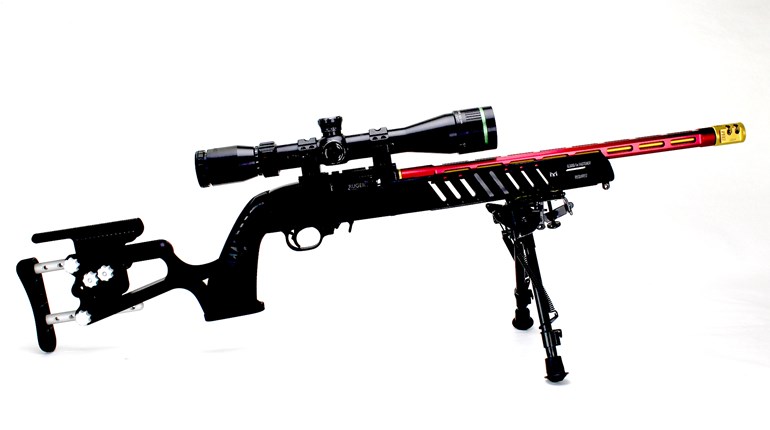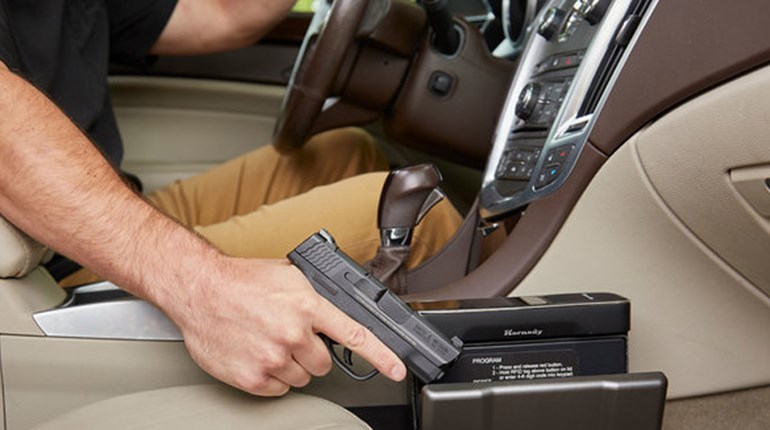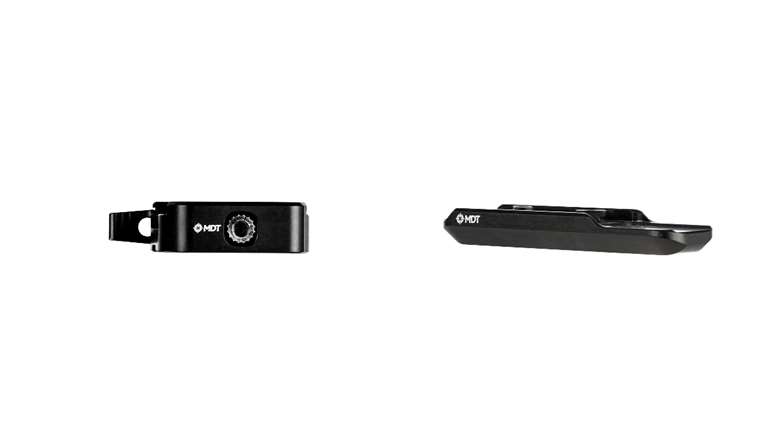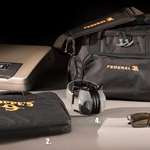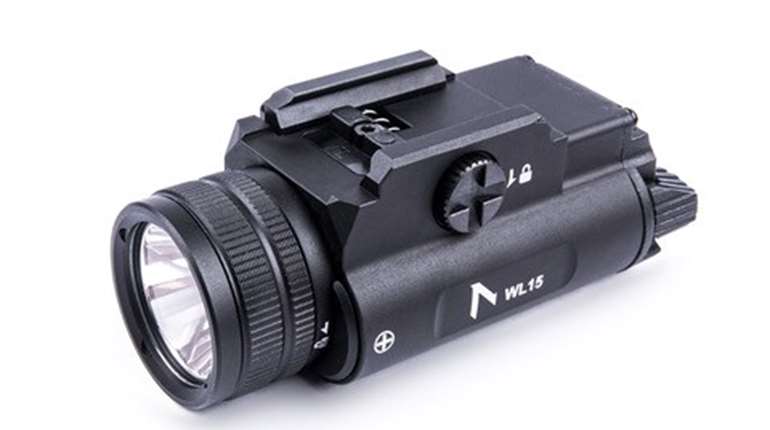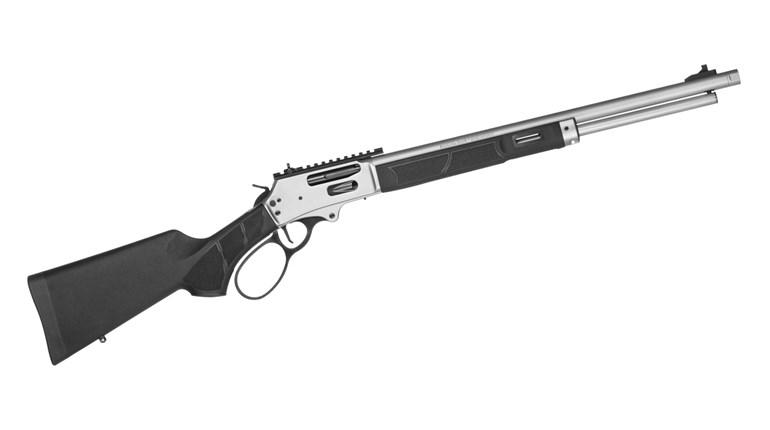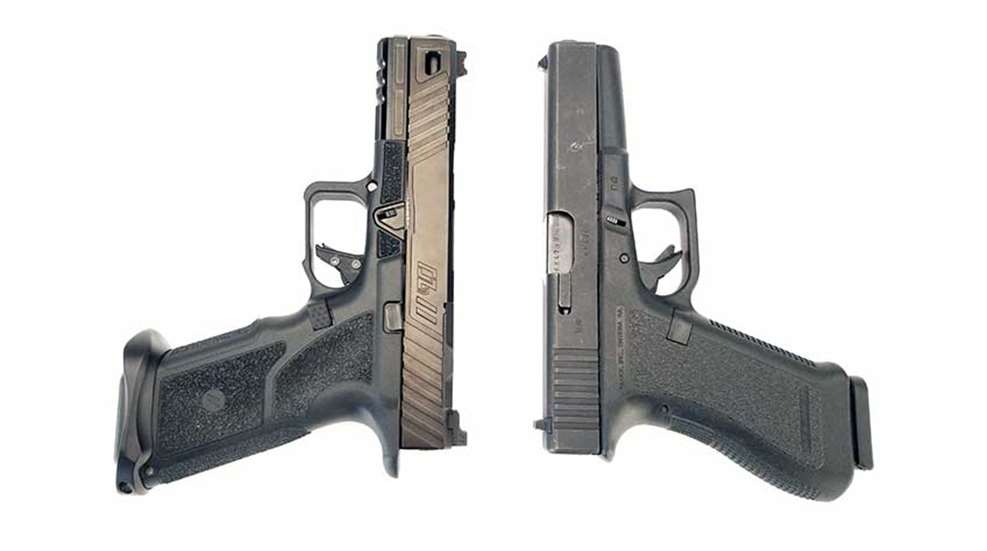
While it’s true that part of the inspiration for this build was to use the countless bins of Glock parts that I’ve amassed for review over the years, when the time came to select the particular components to be used I was reminded of something the Father of the Modern Pistol Technique, the late COL. Jeff Cooper said regarding a good pistol for self-defense: namely that there are three key features that make up a good fighting pistol: It must have sights you can see, a trigger you can manage and be chambered in a caliber that’s up to the task.
Though a Gen4 frame with an OEM trigger module served as the basis of this build, the latter was one of the first things to go only to be replaced with an Apex Tactical Action Enhancement Kit for Glocks. A drop-in replacement for the OEM polymer trigger, the kit includes performance-enhancing features such as a new trigger bar, connector and safety plunger. According to the website, all combine to provide a smoother-feeling trigger pull with less travel, minimal reset and that crisp, coveted break all shooters equally yearn for. (If it disappoints, being an AGI Glock-certified armorer, I may try take either this kit or the OEM components and to an action job to see if there’s room for improvement.) The other Apex Tactical component I added was a Glock Gen4 Failure Resistant Extractor, which, according to the company’s website boasts improved geometry and a more-robust claw made from a billet of aerospace-grade stainless steel for enhanced extraction.
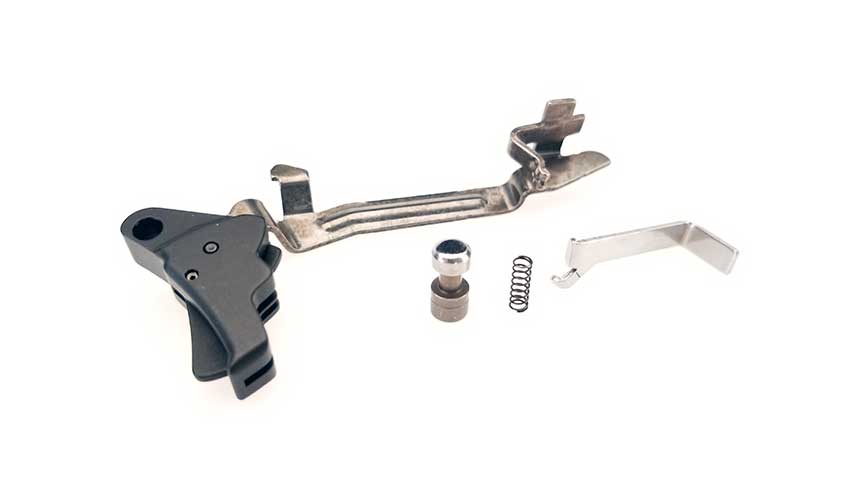
Regarding sights, I wanted something durable and geared strictly for self-defense. Given my first prerequisite, that ruled out today’s popular fiber-optic variety of sights seen on many of today’s pistols. While I think they are a good choice for pistols that are primarily used for recreational shooting, a cursory glance of this type of pistol sights reveal a design that’s quite fragile, both in relation to the sight’s base as well as the fiber-optic pipes themselves. As such, it’s easy to envision a front sight catching the top edge of a holster during a hasty drawstroke only to be broken (especially if the holster in question is of the Kydex persuasion). Well, I’ve heard of exactly that happening from other gunwriters while attending events like 3 Gun matches and defensive-pistol courses with high-round counts. So, if fiber-optic pistol sights are incapable of enduring that sort of abuse, I submit they have no place on a pistol intended for personal protection. So what’s better? Trijicon HD Night Sights. A high-visibility design combined with the low-light utility of tritium, they feature a bright, easy-to-see yellow or orange front ring surrounding a tritium dot paired with a shallow, U-shaped rear aperture that is designed to draw the eye quickly and instinctively to the vibrantly-colored front post. As an added bonus, the addition of a flat surface on the rear assembly aids in one-handed malfunction clearance. Why each offer eye-catching, quick-to-acquire designs, Trijicon HD Sights are significantly more robust, not to mention much more practical for defensive use.
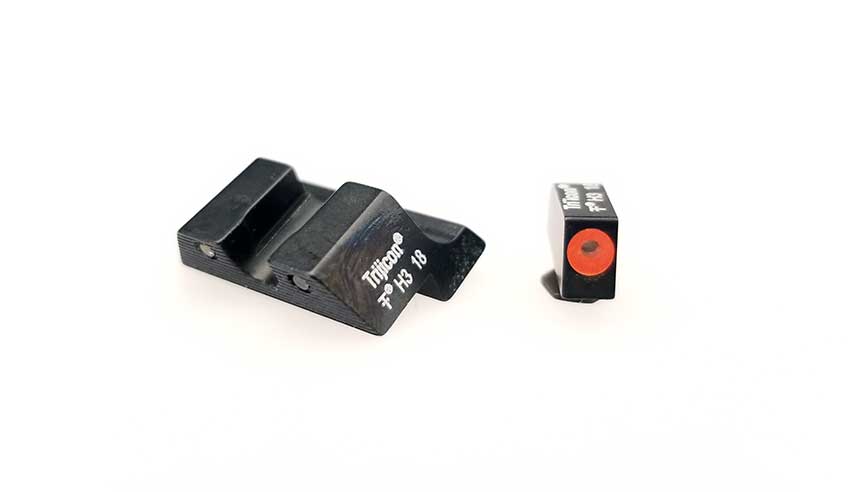
Though my motivation for this project is largely whimsical in nature (i.e. to put the myriad of aftermarket parts I’ve amassed over the years to use—if not to clean out my parts bins) my justification for choosing for choosing 9 mm has evolved largely out of necessity: a growing sensitivity to recoil stemming from arthritis in my hands. Nonetheless, while my paws may be yearning for me to forsake .45 ACP of which I am so fond, another part of me is less than enthusiastic to do so. Simply put, I’ve allowed experiences from my past to influence my opinion of the 9 mm: How informal ballistic testing of which participated years ago with my father where we shot different caliber handguns into assorted objects, such as stacks of phonebooks, gallon milk cartons filled with water and bowling pins. From the point-of-view of an adolescent, the testing seemed pretty cutting edge and it provided a unique means of laying the groundwork for a basic knowledge of ballistics, how certain types of projectiles perform compared to others not to mentioned establishing a fondness for firearms that I eventually built upon and cultivated into a career. However, times change—and so does ammunition.
Today, as associate editor for Shooting Illustrated: official journal of the National Rifle Association, my knowledge of ballistics and the terminal performance of handgun cartridges has grown a great deal—largely in part to working with our Ammo editor, Richard Mann, who, I’m sure has forgotten more about self-defense ammunition and how it performs than myself or the entire SI staff will ever know. Fortunately, he writes extensively on the subject and two particular columns of his stood out: In our September, 2017 issue, his column, “Back to the Nine” in which he discusses the FBI’s decision to return to 9mm as a duty round.
There he writes, “It’s that emphasis on penetration which has brought us to where we are today. To be considered for duty, the FBI mandates—among other things—that the bullet must penetrate at least 12 inches in 10-percent ordnance gelatin, and it must do so even when encountering a wide array of barriers. For 30 years, bullet engineers have been working toward that goal. Today many loads for police duty cartridges meet that benchmark. By going with the 9mm, the FBI gets the terminal performance it desires, with more capacity, in a handgun that’s easier, and faster, to shoot accurately.” He later adds another piece to the terminal-performance puzzle saying, “But velocity matters; it is the element of the equation that allows a bullet to expand, penetrate and do its work.”
Mann later wrote a column that not only showcased his knowledge of ballistic testing and the terminal performance of defensive-handgun ammo. In “What the experts carry” he queried fellow Shooting Illustrated field editors, asking them what type of ammo they carried for self-defense and why. To my surprise, the majority of my co-workers and our field editors carry pistols chambered in 9 mm. Perhaps switching chamberings would be beneficial to me after all—provided I can successfully alter the Glock’s OEM configuration enough to meet my needs.
Proponents of today’s striker-fired pistols consider the pistol’s polymer frame as a beneficial feature and, on the surface, it’s easy to understand why. Polymer is not only easier to care for than steel. It translates to less weight on your hip and, as such, that’s why polymer-frame pistols typically feature staggered magazines with generous capacities—one that by comparison will weigh a fraction of an alloy or steel-frame pistol of similar or equal capacity. This seemingly winning combination has led many of the handguns being designed for personal protection are smaller and lighter today—a trend that may not be for everyone.
Those with physically disabilities my not take to them as well. For example, as a byproduct of my cerebral palsy, I have limited fine-motor coordination and one of my wrists is fused, which makes attaining a firm support grip on a handgun challenging on the best of days. As a result, whenever I shoot a polymer-frame pistol—regardless of caliber—the recoil always feels snappier than its heavier counterparts. So, while it be counter to the designs currently being introduced on the market, mass not only plays and essential role in making a handgun function properly, it also is a key component in mitigating felt recoil.
To truly address these concerns as part of this Glock build means requires more than compromising on caliber. To truly make a something that’s comfortable to shoot will require bucking this trend. By determining a judicious means of adding by adding mass to the pistol should make the pistol more controllable and ultimately better suited to my own unique needs.
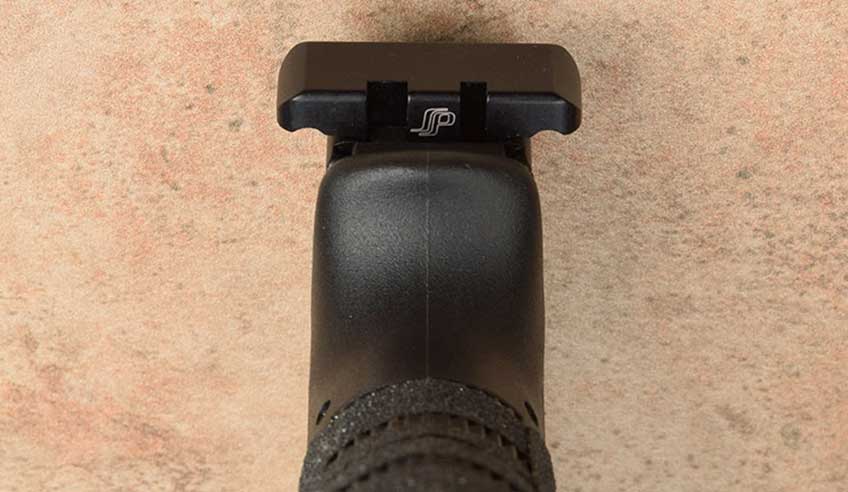
The three mass-enhancements came from Carver Custom in the form of a “Big Mouth” Steel Insert made out 4140 steel. Weighing in at 2 ounces, designed to fit inside the Glock’s lanyard tunnel and includes mounting hardware and Allen wrenches. To that I added the company’s “Big Mouth” Tactical Magwell. Despite being made of 6061-T6 aircraft aluminum, and tipping the scales at a mere .9 ounces, the part adds a tad more weight under the grip portion of the gun, it helps to compensate for my fused wrist by helping me with reloads. Designed for carry use, the addition of an EZ Racker by Springer Precision replaces the OEM striker-retaining plate and should improve handling of the pistol by allowing my support hand to slingshot the slide into battery by using a “claw-style” grip despite my fused wrist.
As a means of addressing the other end of the pistol, I added a Tungsten Uncaptured Guide Rod Assembly. The largest-diameter rod available, it weighs twice that of stainless steel offerings to lessen felt recoil and muzzle rise by 60 percent. Best of all, it’s available as a combo unit that comes with a Wolff recoil spring and Gen4 bushing.
With regard to the pistol’s accuracy, I opted to select a Precision Match G19 from L2D Combat to suit my needs. What are those needs? I want a pistol that is capable of precision-grade accuracy and function reliably until either the threat is incapacitated or the pistol is empty. As concealed-carry permit licensee I am responsible for every round that leaves the gun and, as such, I want the gun to be as accurate as possible. In spite of FBI statistics cite with regard to of defensive shootings occurring at distances of 7.5 yards or less, and regardless of the conventional wisdom about what some refer to as “combat accuracy,” I want a gun capable of threading the needle. Some of the barrel’s appealing features include its 416R stainless steel construction, conventional, precision-cut 1:10 RH twist rifling (that will accept any type of ammo, unlike the hexagonal rifling of an OEM barrel that in incompatible with lead projectiles) a generous muzzle crown, a fully supported chamber and an extended feedramp. The exterior contains eight barrel flutes aid heat dissipation, while flutes along the barrel hood reduce drag and repel malfunction-causing debris.
Concerning magazines I’ve found very little negative information about current OEM variants, a sentiment thoroughly echoed by my Glock-packing co-workers here at SI. However, their opinions have been mixed when it comes to aftermarket magazines produced by a certain Texas-based manufacturer.
As an alternative, I’m quite interested in the magazines produced by Elite Tactical Systems Group. In addition to their many practical features, including complete compatibility with all generation of Glocks and aftermarket floorplates, the bodies of ETS Glock magazines are constructed of a translucent polymer, which allow users to identify the type of ammo on hand and pistol readiness on the fly—all of which I consider essential for a self-defense pistol. (The only thing I find lacking from these magazines is a high-visibility follower to make such confirmations even easier in low-light conditions.)
Regardless, I know all pistols have a personality of their own and, as such, thorough testing of all the aforementioned magazines will be necessary to determine which one(s) will perform best in my pistol.
The next installment will cover a series of short but essential function tests to verify your Glock is safe to shoot prior to taking it to the range.













